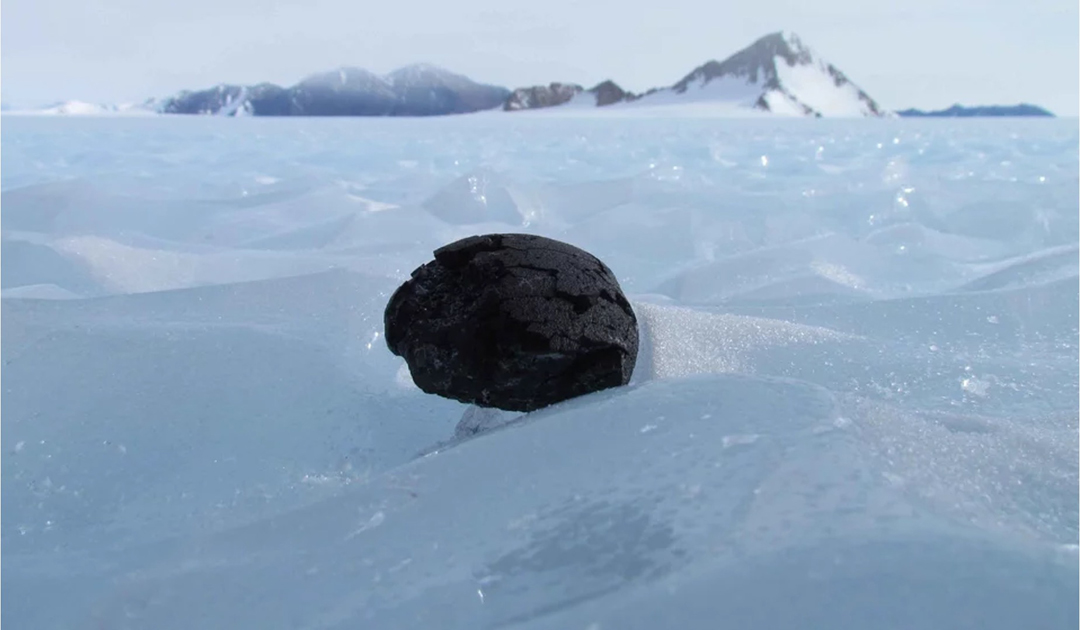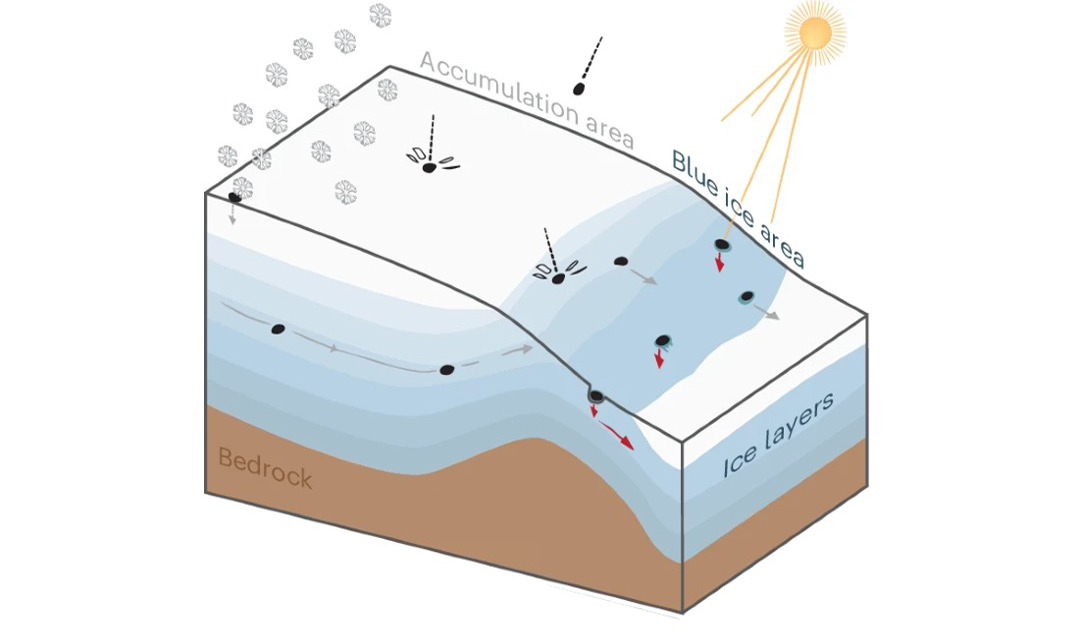
In Antarctica, meteorites are threatened by global warming. A situation that could cause valuable information from outer space to disappear forever.
After glaciers, sea ice, oceans, rivers, permafrost, humans, animals and plant species, it’s now the turn of meteorites to bear the brunt of global warming. According to a study published on April 8 in Nature Climate Change by a team of Belgian and Swiss researchers, a large number of meteorites could disappear forever, and with them valuable information about the formation of the Earth and other celestial bodies.
Using artificial intelligence, satellite observations and climate projections, the research team determined that for every tenth of a degree increase in global air temperature, between 5,100 and 12,200 meteorites would disappear into the ice cap. “At present, approximately 5,000 meteorites become inaccessible per year (versus ~1,000 finds per year) and, independent of the emissions scenario, ~24% will be lost by 2050, potentially rising to ∼76% by 2100 under a high-emissions scenario.”, note the authors in their study.
Because of their dark color and composition, meteorites absorb sunlight, heat up and melt the ice on which they rest, sinking deeper into it. With global warming, these rocks from outer space are in danger of disappearing completely into the ice cap. . ” […] As atmospheric temperatures increase, the surface temperature of the ice increases, intensifying this process, since less heat from meteorites is required to locally melt the ice.”, explains Veronica Tollenaar, PhD researcher at the Laboratoire de Glaciologie of the Université Libre de Bruxelles (ULB) and co-author of the study, in a press release issued by the university.

A real problem when you consider that 60% of the 80,000 meteorites found on Earth come from Antarctica. Between the vast white expanses and the absence of rocks, Antarctica offers optimal conditions for spotting meteorites, whose average diameter is just a few centimetres. What’s more, meteorites are best preserved in conditions of low precipitation, which is why they are generally found in deserts. Antarctica, with its cold, dry air and scant rainfall, offers ideal conditions. Meteorites can crash anywhere in Antarctica and rest for a very long time on the surface: “Once exposed at the surface, meteorites can stay there for thousands of years due to stagnant ice flow and the lack of weathering in the cold, dry conditions.”, the authors mention in their research.
With global warming melting the cryosphere and threatening the gigantic Antarctic ice masses, action is urgently needed to preserve this precious information from space. “To secure this invaluable extraterrestrial material, we need to intensify and coordinate the recovery of Antarctic meteorites before we lose them to climate change.”, says Harry Zekollari, co-director of the study and glaciologist at ULB, the SLF Institute for Snow and Avalanche Research and ETH Zurich, in the press release. “In similar efforts as collecting ice cores from vanishing glaciers or sampling coral reefs before they bleach, our study identifies the loss of meteorites as an unexpected impact of climate change upon which we need to act.”
According to specialists, between 300,000 and 850,000 meteorites remain to be discovered on the surface of Antarctica.
Mirjana Binggeli, PolarJournal
More on the subject





